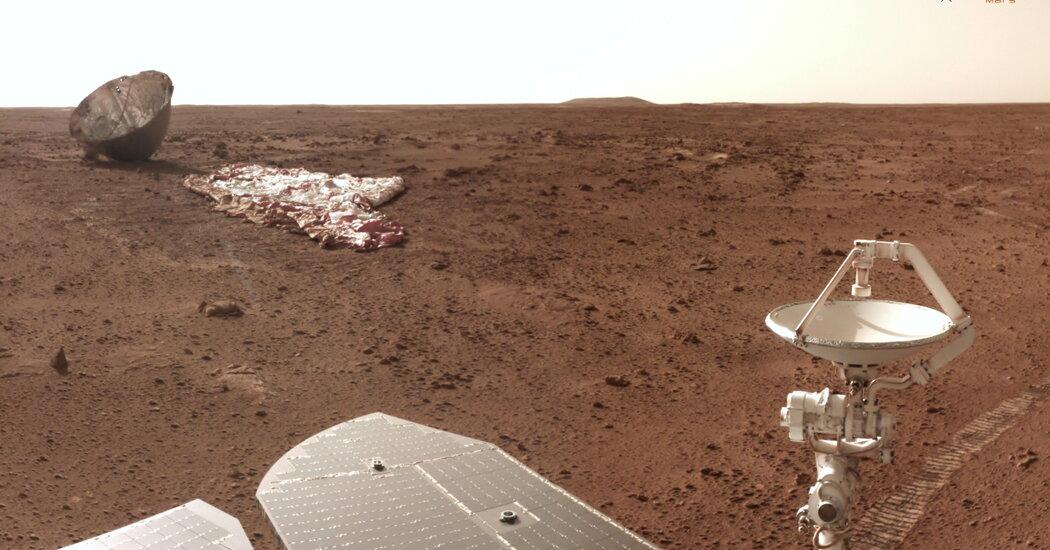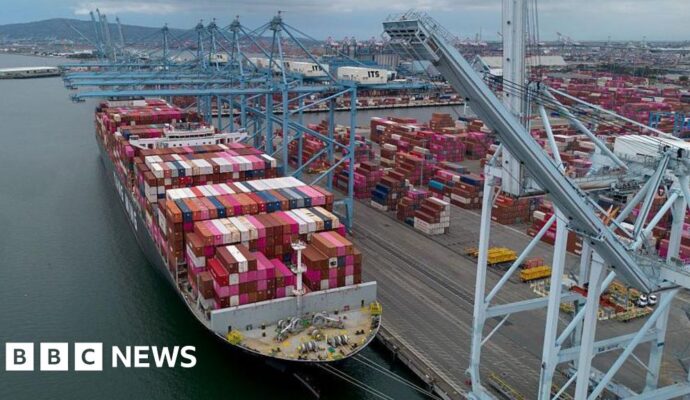
July 19, 1964
China successfully launches its first biological experiment to the edge of space: a rocket carrying eight white mice.
⬇
April 24, 1970
China launches its first satellite, which broadcasts the patriotic anthem “The East is Red” as it orbits.
⬇
Nov. 26, 1975
China launches a remote-sensing satellite that orbits the planet and returns to Earth on Nov. 29.
⬇
March 5, 1986
Deng Xiaoping approves a science and technology project code-named “863” to develop the country’s crewed spacecraft.
⬇
Sept. 21, 1992
Jiang Zemin approves “Project 921,” a plan for China’s crewed space program that included the goal of build a space station by 2020.
⬇
Feb. 15, 1996
A Long March 3B rocket carrying an American company’s satellite explodes 22 seconds after liftoff, killing at least 63 people as wreckage and flaming fuel landed on a Chinese village. An American investigation into the accident later led to federal lawsuits against U.S. satellite makers for sharing technology with Chinese officials.
⬇
Nov. 20, 1999
China launches and recovers an uncrewed spacecraft, Shenzhou 1, for the first time, a key step toward sending the country’s astronauts into orbit.
⬇
Oct. 15, 2003
Shenzhou 5 launches into orbit with the first Chinese astronaut, Yang Liwei, aboard.
⬇
Jan. 11, 2007
China conducts its first test of an antisatellite weapon, matching an ability demonstrated by the United States and Russia.
⬇
Oct. 24, 2007
The first lunar probe built by China, Chang’e 1, launches from the Xichang Satellite Launch Center.
⬇
Sept. 27, 2008
Zhai Zhigang becomes the first Chinese astronaut to walk in space.
⬇
June 18, 2012
China completes its first crewed space docking when the Shenzhou 9 space capsule meets the prototype Tiangong-1 laboratory in orbit.
⬇
Dec. 14, 2013
China’s robotic Chang’e 3 probe lands on the moon, deploying the Yutu rover.
⬇
Sept. 15, 2016
A second prototype orbital laboratory, Tiangong-2, launches to replace Tiangong-1.
⬇
April 1, 2018
The prototype Tiangong-1 lab, abandoned and out of control, crashes into the southern Pacific Ocean after re-entering Earth’s atmosphere.
⬇
Jan. 3, 2019
Chang’e 4 becomes the first spacecraft to make a soft landing on the far side of the moon.
⬇
May 11, 2020
The Long March 5B, one of the most powerful rockets operating on the planet, completes an uncontrolled re-entry into Earth’s atmosphere and some of its debris lands on a village in Ivory Coast in West Africa.
⬇
July 31, 2020
Xi Jinping announces the opening of Beidou 3, a global satellite navigation system providing GPS-like services to China and other customers.
⬇
Dec. 17, 2020
Chang’e 5 returns to Earth with samples from the moon.
⬇
May 15, 2021
The Tianwen-1 spacecraft sets down on Mars with the Zhurong rover, completing China’s first landing on another planet.
⬇
June 16, 2021
The Shenzhou 12 mission takes three Chinese astronauts to Tianhe, the initial module of the Tiangong space station.
⬇
Oct. 14, 2021
The Xihe satellite for solar observation launches.
⬇
July 24, 2022
China launches Wentian, the second module of the space station.
⬇
Oct. 31, 2022
Mengtian, the third and final module, launches and then docks the next day with the space station complex, completing construction of the Tiangong outpost in orbit.
⬇
Nov. 29, 2022
The Shenzhou 15 mission takes off from the Jiuquan Satellite Launch Center, carrying three Chinese astronauts toward the completed Tiangong space station. They dock the following day, marking the first time that six occupants are aboard at once and beginning the permanent occupancy by astronauts of the space station.
Research by Li You.


